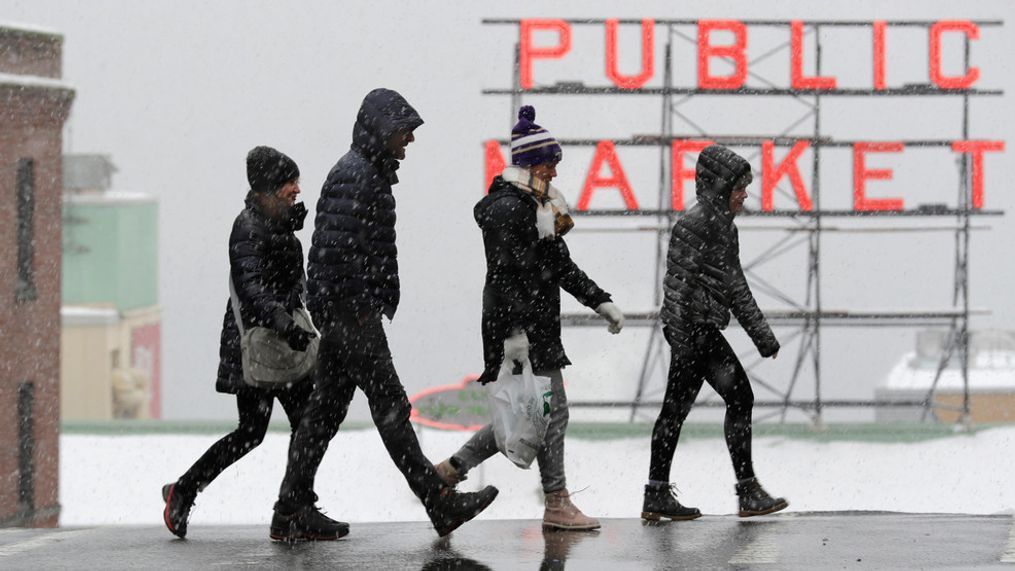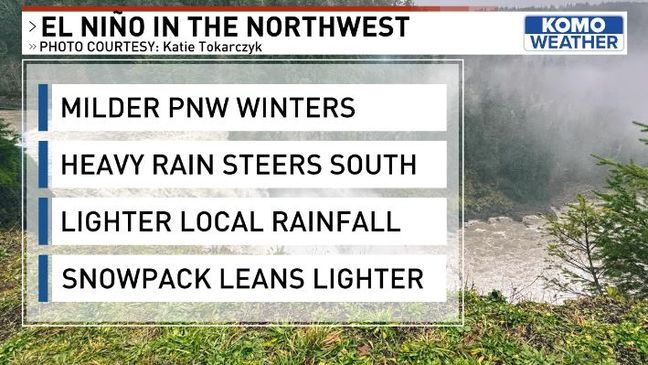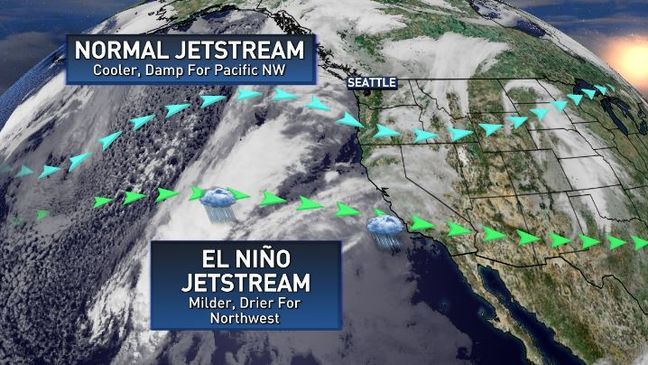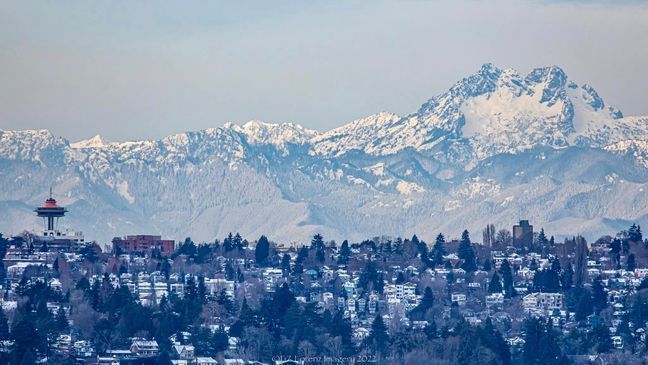Understanding El Niño's role in warmer, drier Pacific Northwest winters
SEATTLE — The National Weather Service's (NWS) Climate Prediction Center predicts El Niño conditions to persist through the upcoming spring, and that changes what we can expect for winter in the Pacific Northwest.
El Niño is characterized by conditions in which there are warmer than average waters near the equator in the Central and Eastern Pacific Ocean, according to scientists at the Scripps Institute of Oceanography. In order to classify as El Niño, these waters must be at least 0.5 degrees Celsius above their usual temperatures.
While El Niño typically occurs more often than La Niña, the opposite climate pattern, we had been experiencing La Niña since early fall 2020, and the last major El Niño event was in 2016, according to the NWS Climate Prediction Center.
ALSO SEE: Your latest western Washington Forecast
But how do warmer waters in the Pacific affect the weather in the U.S.? The answer is that as El Niño heats the ocean and atmosphere in that region of the Pacific, it causes the jet stream to strengthen and shift south.
El Niño is generally associated with patterns of weather extremesacross the globe, but the effects vary greatly region-to-region. In the Northwest, winter conditions are generally drier and warmer than usual. As a result, Washington state ski resorts may experience less abundant snowfall this season.
RELATED:KOMO 4-Cast Team: 2023 gets an A- with these most memorable weather moments
It is important to note though that while ENSO patterns can provide important information about climatic trends and the likelihood of certain events, they are not a weather forecast. There still remains a possibility of cold days, days with heavy rain, and even snowfall in our future.
The winter solstice occurred on Dec. 21, marking the start of later sunsets as we head into the winter months.



